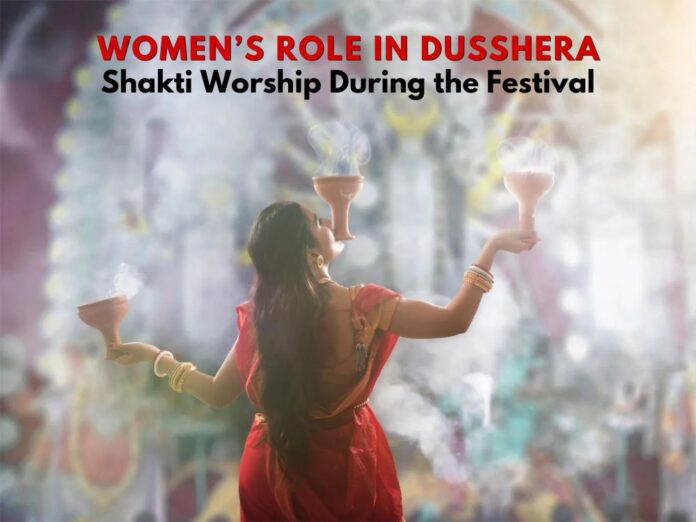Dusshera, also known as Vijayadashami, is widely celebrated across India as the day marking the victory of good over evil. Traditionally, this festival celebrates the triumph of Lord Ram over Ravana in Hindu mythology. However, an equally important aspect of Dusshera is the worship of Shakti, the divine feminine energy, making women central to the festival’s rituals and spiritual significance.
The Worship of Shakti and the Empowerment of Women
During Dusshera, particularly in the lead-up through Navratri, women are seen as incarnations of the goddess Durga or Shakti, symbolizing strength, power, and victory. Durga Puja is celebrated with great fervor, especially in states like West Bengal, where the goddess Durga’s triumph over the buffalo demon Mahishasura represents the victory of righteousness. Women’s roles in these celebrations extend far beyond the symbolic, as they lead the rituals, create the traditional Alpana (rangoli), and oversee the daily pujas dedicated to Durga.
Across India, the Kanya Pujan ritual is an essential part of Dusshera celebrations, wherein nine young girls, representing the nine forms of the goddess Durga, are worshiped and offered gifts. This ritual not only underscores the deep cultural reverence for female energy but also emphasizes the nurturing and protective role of women in society.
Women as Leaders of Rituals in West Bengal
In West Bengal, where Durga Puja takes center stage, women play an integral role in all aspects of the celebrations. The rituals include invoking the goddess, decorating the pandals, and preparing prasad. One of the most important aspects of Durga Puja is Sindoor Khela, a ritual on Vijayadashami where married women smear vermillion (sindoor) on each other’s faces. This act signifies the goddess’s strength and victory while also celebrating womanhood, fertility, and marital bliss.
Maharashtra and Gujarat: The Role of Women in Garba and Aarti
In states like Maharashtra and Gujarat, Dusshera is part of the larger Navratri festival. Women, draped in colorful attire, take part in Garba and Dandiya Raas, traditional folk dances performed in honor of Goddess Durga. These dances not only act as a form of worship but also create a sense of community and empowerment among women.
Women also play a prominent role in the aarti (prayer) rituals during Navratri, offering prayers to the goddess for the health and prosperity of their families. The spiritual importance of women is further reinforced during these nine days, as they lead processions, organize rituals, and serve as key figures in the communal prayers.
Southern India: Bommai Golu and the Role of Women
In Tamil Nadu, Bommai Golu is a major feature of Dusshera celebrations. Golu is the artistic arrangement of dolls and figurines that depict mythological scenes and is a tradition largely spearheaded by women. The preparation and decoration of Golu are a significant part of the festival, symbolizing the importance of women’s creativity and leadership in religious and cultural rituals. Women and young girls are invited to visit each other’s homes to view the Golu displays, strengthening social bonds and celebrating the feminine divine.
Uttar Pradesh and Bihar: Shami Tree Rituals and the Role of Women in Agriculture
In regions like Uttar Pradesh and Bihar, women participate in the Shami tree rituals during Dusshera, symbolizing the goddess’s protection and the prosperity of the harvest. These rituals acknowledge the importance of women in agricultural societies, honoring their contributions both as nurturers and as pivotal figures in the agrarian economy.
Empowerment and Celebration of Women Through Rituals
Throughout India, Dusshera and the associated celebrations of Navratri provide a platform for the recognition and empowerment of women. As symbols of Shakti, women are seen not only as vessels of divine energy but also as essential to the balance of life and prosperity. The festival’s emphasis on the feminine divine encourages the celebration of women’s strength, resilience, and leadership both in family and community roles.
In essence, Dusshera underscores the spiritual and social power of women, presenting them as integral to the festival’s celebration of the ultimate victory of good over evil. The veneration of Shakti, through rituals led and performed by women, reminds us of the deep connection between femininity and divinity in Indian culture.


